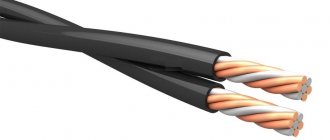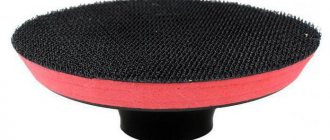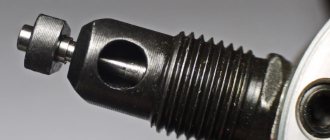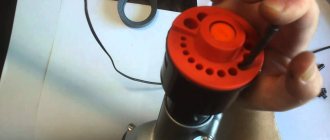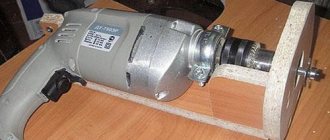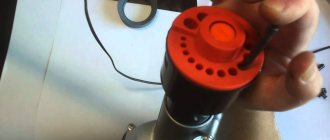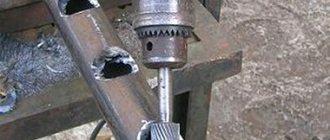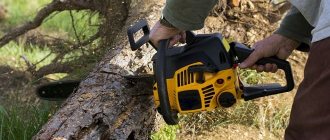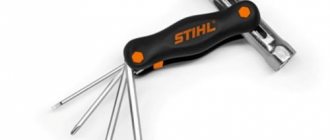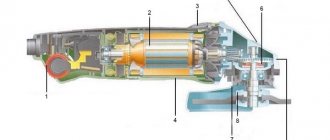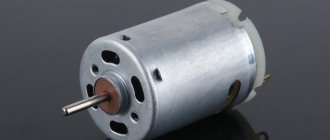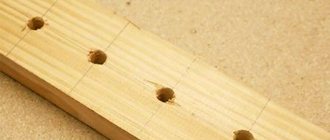The main reasons for the breakdown of rotary hammers and jackhammers
As you know, wallpaper hammers and hammer drills work in difficult conditions, which are accompanied by shocks and constant vibrations, as well as dirt and dust, which is the main cause of tool failure. Therefore, first of all, it is necessary to protect the instrument from various contaminants getting inside the device, which will increase the wear resistance of rubbing and rotating parts. This is especially important when working on the ceiling, since dust and particles of material will get inside the device most intensively. To protect the tool in this situation, you can use a vacuum cleaner or build an improvised protective shield.
Repair of jackhammers and rotary hammers
All malfunctions of rotary hammers with jackhammers can be divided into two types: mechanical and electrical. In most cases, mechanical damage can be fixed on your own, but with electrical problems, you will most likely have to seek help from a specialist. Of course, you can replace the cord or plug yourself, but only a technician with special equipment can repair the motor armature winding or rewind the stator.
Mechanical breakdowns of jackhammers and rotary hammers
Mechanical problems can often be identified by hearing or visually. During operation, the hammer drill begins to emit a strange hum, knocking and grinding noise, or a disgusting smell comes from under the body.
One of the most common mechanical breakdowns is associated with the operating mode switching mechanism located on the tool body, which is constantly exposed to dust and dirt. Repairing it is quite simple: you need to unscrew the housing part with the mechanism, find the cause of the malfunction and eliminate it, or, if necessary, install a new mode switch.
The cartridge also fails quite often. This is due to the fact that during operation it is subjected to enormous loads and vibrations, as well as exposure to dust. In order to protect it from damage, it is enough to constantly wipe it with a damp cloth.
Mechanical damage also includes: failure of the bearing or striker of the impact mechanism, damage to the gear teeth, breakage of the clutch, and cracks in the spindle clamp. You can fix these problems yourself.
Electrical faults of jackhammers and rotary hammers
The following signs indicate that the breakdown is related to the electrical part:
- When the device is plugged in, the motor does not rotate;
- The commutator brushes spark;
- There is a smell of burnt insulation;
- Acrid smoke is coming from the body.
In order to determine and eliminate the cause of these phenomena, the hammer drill with a jackhammer must be disassembled.
If the reason is related to a burnt out wire or a faulty plug, then you can fix it yourself. But more serious problems require the involvement of a specialist.
One of the common breakdowns is wear of the engine commutator brushes. To eliminate it, simply replace the brushes. However, it happens that the commutator brushes are in order, but the engine still does not work. In this case, using fine sandpaper, it is necessary to clean the collector itself from dust and carbon deposits.
Sometimes it happens that some of the contact mounting bolts become loose due to vibration. In this case, it is enough to simply tighten them.
The biggest nuisance will be the appearance of an unpleasant burning smell and hum when the hammer drill is turned on. This indicates failure of the armature or stator winding. Elimination of this breakdown is possible only in a specialized workshop.
Do not forget that some parts can be repaired if they break, some require replacement, and it also happens that it is not possible to repair the tool.
Parts that can be replaced:
- air and fuel filters;
- ignition switches;
- electric motor commutator brushes;
- oil;
- spark plug;
- rotor and stator;
- cartridge;
- “drunk” bearing;
- cord and plug;
- armature and stator windings;
- rings, anthers, etc.
In any case, if a breakdown occurs, it is best to contact a specialist who will provide qualified and competent assistance to your instrument.
Return the jackhammer or rotary hammer to the service address
St. Petersburg, st. Pigungnaya house 20, Telephone
Call us right now and the service manager will provide you with professional advice on tool maintenance issues.
For a complete list of repair services, follow this link.
Source: apilki.ru
How to repair a drill yourself?
In situations where a Hitachi, DWT, Makita, etc. drill stops turning on even though the electrical part is working, defects should be looked for in the mechanical components. Most often this is:
- damage to the gears of the gearbox, accompanied by a characteristic grinding noise;
- wear of the clamping jaws of the chuck, as a result of which the reliability of fixing the drill or other tool is impaired;
- jamming or excessive play in the support bearings, which requires their complete replacement.
A screwdriver is often used in various fields: construction, repair, decoration, and everyday life. This tool, like other electromechanical equipment, is subject to damage. However, its structure and design are not at all complicated, and the problem that has arisen can be dealt with independently without the help of specialists. Common screwdriver breakdowns and reasons for their occurrence.
The act reflects the name of the assets, how many years they have been in operation, their quantity, price, amount, reason for write-off.
Damage to the teeth in the collet area. Occurs when tightening a poorly inserted blade. Care must be taken to prevent this damage. Another common tool breakdown is related to the mechanism for switching operating modes (rotation, strike, rotation with strike). Therefore, if your hammer drill does not turn on, for example, the rotation mode, then you should disassemble the tool and visually check the switching mechanism.
A drill is one of the popular power tools that are popular not only when carrying out construction and finishing work. Depending on the nature of the tool’s use and its quality, negative consequences such as drill failure may occur.
If your hammer drill suddenly breaks down, don’t be upset, because in most cases you can fix the problem yourself.
Now inspect the commutator brushes and the commutator itself. The brushes should fit tightly to the commutator, and there should not be a large amount of carbon deposits and (or) graphite dust on it. If necessary, carbon deposits are removed with fine sandpaper, and hardened accumulations of graphite dust are scraped off with some pointed tool.
When disassembling and repairing a rotary hammer with your own hands, you need to know the characteristics of the device and how the engine is installed: vertically or horizontally.
Troubleshooting
If you smell a burning smell, the tool is noisy or heats up quickly, there is a grinding noise, or there is already smoke, then these are signs that your repair tool is not working properly.
To prevent this, take breaks from work. For example, stop the device after every 20 minutes of continuous operation.
To prevent malfunctions, after each use of the tool it is necessary to wipe at least its surface from dust and pieces of brick.
Elimination of other breakdowns
Drill stuck
Stopped working
Or there is a malfunction of the switch buttons, then it is worth checking the integrity of the wires.
The drill doesn't hold
The ratchet works
It is almost impossible to repair a clutch with your own hands without professional training, and repairs are expensive. Therefore, it is more profitable to buy a new high-quality hammer drill.
The pike flies out
Source: stroy-podskazka.ru
Defects and malfunctions of the hammer drill
To understand the defects and malfunctions of power tools of this type, our team reviewed several popular brands and identified the causes of the most common breakdowns:
- Increased wear of the working element;
- The appearance of cracks on the handle and body;
- Rechargeable models have short-lived batteries;
- Frequent kinks in the wire in electric models;
- Problems with the impact mechanism and its interaction with the conventional one;
- Fragility of bearings, chuck, parts with teeth, safety clutch.
Why does the hammer drill heat up?
Most often, the reason for this is the length of operating time and heavy loads on the tool. The engine interacts with working units, which may result in overheating. When it appears, turn off the tool, give it time to cool - at least half an hour.
If the rotary hammer hammers but does not drill
- The conical spring holds the clutch, if it becomes loose, a problem may arise;
- The locking roller no longer locks the large shaft gear;
- The tool lock in the barrel stops working.
In this case, it is enough to replace or tighten up the problematic parts and start in a gentle mode.
Smell from the hammer drill
Third-party odors may occur during overheating or increased load for which the model is not designed. If it is new or just from repair, most likely the parts simply have not gotten used to it, and this process will take time.
Hammer doesn't work
- A short circuit that led to the combustion of the rotor or stator;
- Complete wear of carbon electric brushes;
- The brush holders are loose and do not hold them;
- The lamellas on the collector are burnt out;
- The winding on the rotor or stator has broken;
- Battery failure;
- The power cord is kinked.
Winding can be done at home. If you decide to replace brushes, buy two at once, regardless of whether one or both are damaged. If a short circuit occurs, replace the burnt parts with serviceable ones. If the problem is in the wire or battery, buy new ones and install them in place of the old ones.
Oil is leaking from the drill
Leakage is a direct indicator of wear and tear on certain parts inside the mechanism. Spin the model and make diagnostics, change the lubricant if necessary.
The hammer drill is slipping
The reason for this is a weakened coupling. It is enough to tighten it or replace it.
Reverse doesn't work
The reason is the failure of the mode switch button. Disassemble the back panel and, if necessary, replace the contacts.
The hammer drill does not rotate under load
Most likely, the load does not correspond to the permitted norm, resulting in this defect.
Mechanical malfunctions of the Bosch rotary hammer
When mechanical malfunctions occur in the operation of the tool, an extraneous unpleasant sound appears, sparking intensifies in the collector area, a burning smell appears, the tool heats up excessively, its power drops depending on the duration of operation and the impact on the material.
We will look at all the faults in the diagram of the Bosch 2-26 rotary hammer. Other models, such as Bosch 2-20, 2-24, differ in the design of the intermediate shaft and the installation of various bearings.
The hammer drill stops hammering, but drills
The hammer drill does not hammer under load or in idle mode for the following reasons:
- the rubber rings of the striker, striker, and piston are worn out;
- the rolling bearing race has collapsed;
- the cylinder and the firing pin of the percussion mechanism were destroyed;
- cut off the splines of the clutch mounted on the intermediate shaft;
The hammer drill has stopped drilling, but is chiseling
The main reasons why a rotary hammer hammers but does not drill are:
- the force of the conical spring pressing the clutch has weakened;
- the locking roller does not fix the large barrel shaft gear;
- does not hold the tool locking mechanism in the barrel;
- The hammer drill does not chisel or drill.
The main reasons why a hammer drill does not chisel or drill are:
- sheared teeth on the small rotor gear or on the large intermediate shaft gear;
- The rotary hammer electric motor does not work;
- there is no power to the hammer drill motor.
Now let's talk about everything in order
Let's consider options in which the hammer drill does not hammer, but drills
Wear of rubber rings on the striker, striker, piston.
This reason appears gradually as the rubber rings wear out. At first the blow weakens, then disappears altogether.
The malfunction is eliminated by replacing the indicated rubber rings with new ones.
For any repair of rotary hammers or their components, all rubber products must be replaced.
Repair kit for rubber sealing rings for a Bosch 2-26 rotary hammer
The rolling bearing race has fallen apart (drunk bearing)
If the drunk bearing pos. 830 is destroyed, the rotational movement of the intermediate shaft cannot be converted into the translational movement of the cylinder in the impact mechanism.
Eliminated by completely replacing the rolling bearing.
Friction bearing
The cylinder, firing pin, and firing pin of the firing mechanism were destroyed
There are cases when the striker in the cylinder, pos. 26, gets stuck, which leads to destruction of the cylinder and the impossibility of creating air pressure in the barrel of the striker mechanism. And the second reason: destruction or breakage of the striker pos. 28, leading to distortion of the part and the impossibility of transmitting the shock impulse. Breakdowns are eliminated by completely replacing failed parts.
Rotary hammer design, assembly diagram and spare parts list
The tool consists of a single-phase motor and rotor. A gear located on the armature shaft is responsible for rotational movements. Between them there are bearings, one of which is “drunk”, it is this that transmits movement to the working parts.
Barrel hammer drill repair
This procedure is no different from repairing a conventional hammer drill. It is worth considering that the motor and shaft are located vertically.
How to fix a rotary hammer with your own hands
The repair procedure at home is the optimal solution and will cost less than the services of service centers. Instrument repair is expensive and it is not a fact that you will find a conscientious repairman. Before you think about how to make a hammer drill, you should acquire the necessary tools and stock up on theoretical knowledge on how to disassemble and assemble a hammer drill. After completing the repair, run it in gentle mode.
Source: pro-instrument.com
Design and principle of operation of a hammer drill
To understand how to fix a rotary hammer if it breaks, you need to know its structure and operating principle. This tool can work in 3 directions at once:
- drill various holes in concrete and brick like a drill;
- make grooves in soft plaster like a jackhammer;
- screw in the screws like a screwdriver.
Different models of rotary hammers may differ in some design features and additional functions. However, despite all the differences, such products have the same components and systems that allow rotary hammers to perform their main function. Such nodes include (Fig. 1):
- Electrical engine;
- gearbox;
- cartridge;
- impact mechanism.
Figure 2. Diagram of the pneumatic impact mechanism.
There are also additional components that simplify the operation of the hammer drill. These include: an anti-vibration system, a mechanism for fixing the tool in a certain position, a device for switching various operating modes, a system for limiting the drilling depth, etc.
One of the main elements of a rotary hammer is the impact mechanism, which can be electromagnetic or pneumatic. In the first case, the operation of the impact mechanism is controlled by 2 electromagnetic coils, which create reciprocating movements of the core, and the core transmits these impacts to the end part of the tool. In the second case, the operation of the mechanism is ensured by the movement of the piston in the cylinder. It is this type of impact mechanism that is most widespread.
The design of the pneumatic impact mechanism is shown in Fig. 2, where: 1 - pumping bearing, 2 - piston, 3 - ram, 4 - hammer, 5 - gear. When the tool is turned on, the torque from the electric motor is transmitted to the swing bearing, which, converting the rotational motion into oscillatory motion, transmits it to the piston. Due to the pressure difference between the ram and the piston, the first begins to move, putting the displacer into operation. The displacer strikes the working element installed in the cartridge. This principle is used to convert electrical energy into shock energy.
Mechanical breakdowns of the hammer drill
Mechanical breakdowns of a rotary hammer are most often determined visually, by sound or by sensation. The instrument begins to work jerkily, unusual noises and grinding noises appear, and unpleasant odors are felt coming from inside the case.
Very often, in rotary hammers, the operating mode switch, which is located on the tool body and is constantly subject to contamination, fails. It is easy to repair: to do this, you need to remove the part of the housing where it is located, determine the cause of the malfunction, remove it or replace the switch with a new one.
Also, the main part of the dust flow is absorbed by the tool chucks: quick-release and SDS-Plus. The first type (quick-clamping) begins to require more effort when clamping the drill. To restore its functionality, you need to rinse the cartridge in gasoline and it will be ready for use again.
As for SDS-Plus, the repair consists of blowing compressed air through the seating area of the cutting tool (drill) and applying lubricant to the drill shank. In general, the shank of any size drill should always be wiped with a soft cloth and lubricated with graphite grease before work.
Mechanical failures include failure of the “drunk” bearing of the impact mechanism and the mechanism itself as a whole. The bearing, of course, can be replaced, as can some parts of the impact mechanism: the ram collar, piston and gears.
In some cases, it is enough to replace only the lubricant in these parts. It happens that the seats in the body of the hammer drill, where the working parts are located, are broken. Here the matter is more complicated and most likely will be expensive.
Other mechanical breakdowns and their elimination
In addition to breakdowns associated with the impact mechanism, other mechanical breakdowns may also occur in the hammer drill.
Mode switch
There are times when the unit mode switch fails. Basically, this occurs due to dust clogging of this unit. To repair the switch, you will need to disconnect it from the body (see how to do this above) and clean it from dirt. If you find any damage to the plastic parts of the switch, it will have to be replaced.
Helical gears
The reason that the device stopped working normally, namely, stopped drilling and chiseling, may lie in worn-out teeth on the rotor shaft.
If this happens, the teeth on the intermediate helical gear will also be worn.
This problem occurs when the tool is jammed or the clutch is malfunctioning. The breakdown is eliminated by replacing the intermediate gear and engine rotor.
The drill does not stay in the chuck
The reason that the hammer drill does not hold the drill lies in the breakage of the chuck and the wear of its constituent parts:
- deformation of the balls occurred;
- the restrictor ring is worn out;
- The retaining spring gave way.
You will need to disassemble the cartridge and replace problematic parts.
Drill stuck in hammer drill
The reasons that the drill is stuck in the chuck of the device may be the following.
- Before installing the equipment, you did not apply lubricant to its shank. You will need to move the sealing rubber of the cartridge and inject WD-40 into the place where the tool fits.
- Dust got under the balls. Perform the same operation as in the paragraph above.
- If you used a regular drill inserted into an adapter in a hammer drill, then also treat it with WD-40, wait a couple of minutes, and, lightly tapping the clamp surface with a hammer, loosen the equipment in different directions. Typically, after these steps, the clamping jaws open and allow the drill to be removed.
- The tool shank came loose. You will need to first add WD-40 and try to remove the drill. If nothing works, then you need to disassemble the cartridge and knock out the equipment. You can also use tips on how to remove a tool stuck in the device from this video.
Electrical breakdowns of the rotary hammer
If you want to start working with a hammer drill, but it does not turn on, carefully look at the entire chain that is responsible for turning on the tool: the power cable, the plug with the socket, and the switch itself with a lock. Usually all these faults can be easily removed by replacing the chain parts.
The next malfunction is wear on the motor commutator brushes, which must also be replaced. But it happens that the brushes are still normal, but the engine does not develop speed. In this case, you can try to clean the collector itself using fine sandpaper, removing carbon deposits and dirt from its surface.
Sometimes the vibration process causes the screws that secure some electrical contacts to become loose. Tighten the screws and everything will be fine. In general, if you have already disassembled the hammer drill for preventive purposes, check all the connections of wires and contacts!
Of course, the most unpleasant problem is when a burning smell appears from the housing and the engine, when you press the switch, begins to hum and does not rotate. This means that either the armature winding or the stator winding of the electric motor has failed.
In this case, as mentioned above, you will have to go to a workshop for repairing hammer drills or electric motors in particular.
You must always remember that a rotary hammer is a complex electromechanical tool that works under difficult conditions. Therefore, it must be handled carefully, with understanding and without “fanaticism”, without creating additional difficulties when working with it.
Source: remontzhilya.ru
Do-it-yourself hammer drill repair
Main components of a hammer drill.
To repair a rotary hammer, you may need the following tools and materials:
- tester;
- set of wrenches;
- screwdriver;
- knife;
- insulating tape;
- lubricant;
- alcohol;
- rags.
If you more or less understand the design of a hammer drill, then this will allow you to quickly find a breakdown and fix it with minimal financial investment. Typically, repairing this tool comes down to replacing a failed part:
- anchors;
- starter;
- brushes;
- bearings;
- power cable;
- switch.
It should be noted that it is much easier to repair a household hammer drill than a professional one. But breakdowns of more serious equipment can be quite complex, so it is better to entrust their elimination to specialists.
Sometimes it happens that when you turn on the hammer drill, the electric motor does not start. Usually the cause of such a breakdown is damage to the power cord. Often it bends at the point of its entry into the body of the instrument.
To eliminate this malfunction, you should disassemble the hammer drill and ring the 2 cable cores with a tester. If a break is detected in any place, the power cord must be replaced with a new one. It is recommended not to make twists, since there is a high probability that the cable in this place will break again after a while.
If during operation the motor does not develop full speed or a crackling sound and a burning smell is heard during operation, this may be due to wear on the brushes. In this case, the brushes should be replaced. To do this, you need to disassemble the hammer drill, remove the worn brushes, and install new ones in their place. Another reason for severe sparking of the brushes may be a breakdown of the stator or rotor winding. In this case, the failed parts should also be replaced.
Basic tool malfunctions
- The hammer drill does not turn on when you press the “Start” button. As a rule, this is an open circuit or the contact of the start button has come loose. To make sure of this, you should “ring” the circuit using a multimeter. The procedure is carried out when disconnected from the power supply.
- If the circuit and button are OK, the problem may be with the motor. You need to open the rotary hammer housing and check the engine for obvious damage, a burning smell or jammed rotor.
- Brush wear is the next breakdown on the list that can occur with a power tool. When using a rotary hammer for a long time, the brushes become shortened and cease to exert the required pressure on the commutator. You can buy brushes at the store and replace them yourself.
- Damage to the stator or armature is a serious malfunction. The breakdown requires rewinding, and this work can only be performed by a specialist.
- Noise and vibration increased. There may be several reasons: the bearings are worn out, the gears are skewed, or there is play on them. You can fix this problem yourself.
- The hammer drill requires constant lubrication. If you work without it, very soon the sealing rings will fail, and then it’s not far from the striker. Neglecting lubrication will result in the hammer having to be thrown away.
- The hammer can break if the user presses too hard on the hammer. This is due to the fact that the pressure forcibly accelerates the striker, which is forced to push the drill. Therefore, putting excessive pressure on the power tool is not advisable.
Perforator device
To repair any mechanism, you need to understand its internal structure. So, hammer drills can be of two types:
- With the engine installed horizontally.
- With vertical motor.
In all other respects, all parts of the hammer drill are basically similar.
The hammer drill consists of two parts: electrical and mechanical.
Electrical part of the hammer drill
- The main element of the hammer drill is the engine, which consists of an armature and brushes.
- Engine control device.
- Start and stop button.
- Interference suppression elements (capacitor, chokes);
- Power cord.
In some models, the switch is combined with a control device.
Mechanical part of the hammer drill
- Gearbox. Mounted on the motor shaft.
- Clutch.
- Impact-forward mechanism.
Auxiliary mechanisms
Some models may be equipped with additional parts:
- mode switch;
- vacuum cleaner;
- depth limit;
- other.
How to prevent breakdown
As you know, nothing is eternal. Therefore, even the best quality hammer drill will eventually fail. But if the tool is handled incorrectly, failure will occur much earlier than with proper operation and careful storage.
To extend the life of electrical equipment, the following recommendations must be followed:
- Do not allow the engine to overheat.
- Work carefully.
- You cannot work continuously; the unit requires rest.
- It is necessary to carry out maintenance on time.
- Do not store the tool in a damp or dusty place.
- After each use, wipe off dust with a soft cloth.
How to extend the life of a hammer drill?
The service life of this tool largely depends on the correctness and timeliness of its maintenance, proper preparation for work, as well as on compliance with all storage and operation rules.
Before turning on the hammer drill, you need to check the reliability of fastening of all housing elements, the insulation of the plug and the power cable.
When operating the equipment, you should pay attention to extraneous noise, burning smell and strong vibrations. If they appear, you should immediately carry out maintenance, identify and eliminate the malfunction.
Continuous operation of the hammer drill should not exceed 15 minutes, after which a break should be taken for at least 5 minutes. Before replacing the working element (drill, drill, chisel), be sure to lubricate the tail. It is allowed to change the operating modes of the hammer drill using the appropriate switch only after the electric motor has completely stopped.
Following all recommendations for using a rotary hammer will protect it from failure, and you from headaches.
Nothing lasts forever. And the most reliable Bosch rotary hammers begin to break over time. But any malfunction can be repaired with your own hands if you have detailed instructions for performing repair work. Below we offer you a guide to troubleshooting Bosch rotary hammers and a method for eliminating them. The main causes of breakdowns are:
- careless work with the tool;
- improper storage of the hammer drill;
- heavy loads when working on working parts when chiseling or drilling;
- tool overheating;
- long work without a break;
- failure to comply with maintenance schedules.
Conventionally, faults can be divided into mechanical and electrical.
Next, we will consider faults according to their affiliation, dividing them into mechanical and electrical faults.
